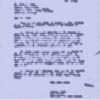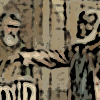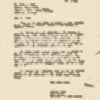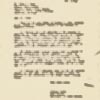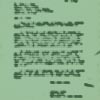Who recieved the "Jailed for Freedom" pins?
Transcript
(Lisa Kathleen Graddy) These were given to the women who were arrested and jailed for picketing in front of the White House in 1917 and 1919 and approximately 150 or so were given to these women. (offscreen interviewer) Great. Can you tell us a little bit about the movement at this time, who these women are and what they're picketing for? (Lisa Kathleen Graddy) It's women from a wide variety of the American population. They're obviously the college-educated militant leaders of the movement like Alice Paul, Dora Stevens, but it's also immigrant women who had been factory workers. Middle-class wives and mothers. It begins to attract more and more women as the need to vote is becoming more and more critical to them. What speaks to me is always the idea, the immediate idea that these women were imprisoned for this-- not for protesting the president or for suffrage, but for obstructing traffic.Source
Interview with Lisa Kathleen Graddy, Smithsonian Institution's National Museum of American History, June 1, 2006.
Much of the history of voting in America has been the story of the expansion and contraction of the voting rights. The invention and use of the 1898 Standard Voting Machine coincided with concern among progressive reformers about fraud and corruption in the electoral process. However, the story of progressive reform should be situated within the larger story of the struggle for voting rights among African Americans and women, and the attempt of the American polity to grapple with the question of whether the large numbers of newly arrived immigrants were fit to participate in civic life.
